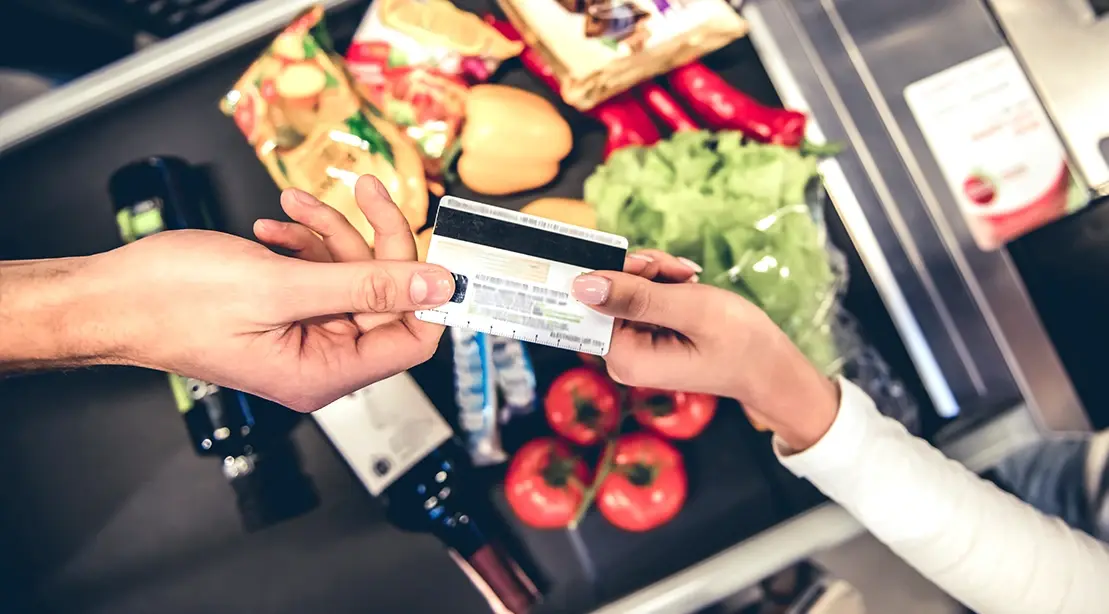When you’re juggling work, family, and the countless bills that keep rolling in – especially with inflation — it can sometimes feel like healthy eating is an unattainable dream. But guess what? It’s time to shatter that myth!
Eating well without draining your wallet or your energy is within your grasp. You don’t have to shop solely at Whole Foods or Trader Joes to get the best of the best. Eating healthy on a budget is definitely possible with some thoughtful planning and smart choices. Here are six simple tips to help you eat nutritious meals without breaking the bank:
1. Embrace Meal Planning
Before heading to the grocery store, plan your meals for the week. This simple yet powerful practice not only prevents you from staring blankly into the fridge, wondering what to cook, but it also saves you from those spontaneous and often unhealthy takeout orders. When you sit down to plan your meals, aim for variety. Include a variety of nutrient-dense foods like whole grains, lean proteins, fruits and vegetables.
Pro Tip: Consider what you already have in your pantry, fridge and freezer to reduce waste and save even more. Take stock of your staples, like canned tomatoes, pasta or spices and incorporate them into your meal plans. This way, you’ll avoid doubling up on items and maximize your grocery budget.
2. Buy in Bulk
Purchase non-perishable items in bulk, such as rice, beans, lentils and whole grains. Buying in larger quantities is often more cost-effective and can reduce the frequency of grocery shopping trips.
You don’t need a Sam’s Club, Costco or warehouse membership to buy bulk. You know that intimidating aisle in the grocery store with all the containers of coffee beans and random dry goods that you usually skip over? That’s the bulk section and it’s calling you! Check it out on your next visit to the grocery store.
3. Buy Seasonal and Local Produce
Focus on buying fruits and vegetables that are in season and locally grown. They are often fresher and more affordable than out-of-season or imported produce. Check local farmers’ markets for budget-friendly options.
Opt for frozen or canned fruits and vegetables when fresh options are expensive or not in season. These items are often more affordable and have a longer shelf life. Just be sure to choose products without added sugars or excessive sodium.
4. Protein Alternatives
Eating well on a budget doesn’t mean sacrificing protein. There are plenty options to boost your protein intake without breaking the bank.
Incorporate cost-effective protein sources such as beans, lentils, eggs and canned fish (like tuna or salmon) into your diet. These alternatives not only offer essential nutrients but also help trim your grocery expenses. Incorporate them into your meals for a healthy and budget-conscious diet that doesn’t compromise on taste or nutrition.
5. Batch It…Cook It…Freeze It!
Save money — and time — by preparing meals in larger quantities and freezing portions for later. Imagine coming home after a long, exhausting day and finding a ready-made, homemade meal in your freezer. No need to resort to pricey takeout or unhealthy convenience foods.
Another plus, batch cooking helps reduce food waste. When you prepare meals in larger quantities, you’re less likely to have leftover ingredients that go to waste. So, it’s an eco-friendly and budget-friendly way to shop and eat.
So, what should you batch cook? Soups, stews and casseroles are excellent choices. They not only taste delicious when reheated but also tend to freeze well.
6. Try to Avoid Processed Foods
Believe it or not, processed and convenience foods can be more expensive and less nutritious than whole, unprocessed options. Fresh ingredients not only pack a punch in terms of health benefits, but they can also be easier on your wallet in the long run.
Stick to the perimeter of the grocery store where fresh produce, meats, and dairy are typically located. Try to cook at home as much as possible to have better control over the ingredients in your meals. Your taste buds, your wallet — and your gut — will thank you for choosing the fresh, unprocessed route!
The Bottom Line…
Remember, staying within a budget while eating healthy involves making conscious choices and prioritizing nutrient-dense foods. With a little planning and creativity, you can maintain a nutritious diet without overspending.
A bit of planning goes a long way. Sketch out your meals, grab the ingredients you need, and boom, you’re a budget-friendly meal-prep pro. It’s not just about saving money; it’s about making your grocery runs a bit more intentional. So, here’s to smart choices, tasty meals, and a little extra cash in your pocket — your ticket to a thriving, wallet-friendly kitchen. Cheers to keeping it practical and nutritious!


